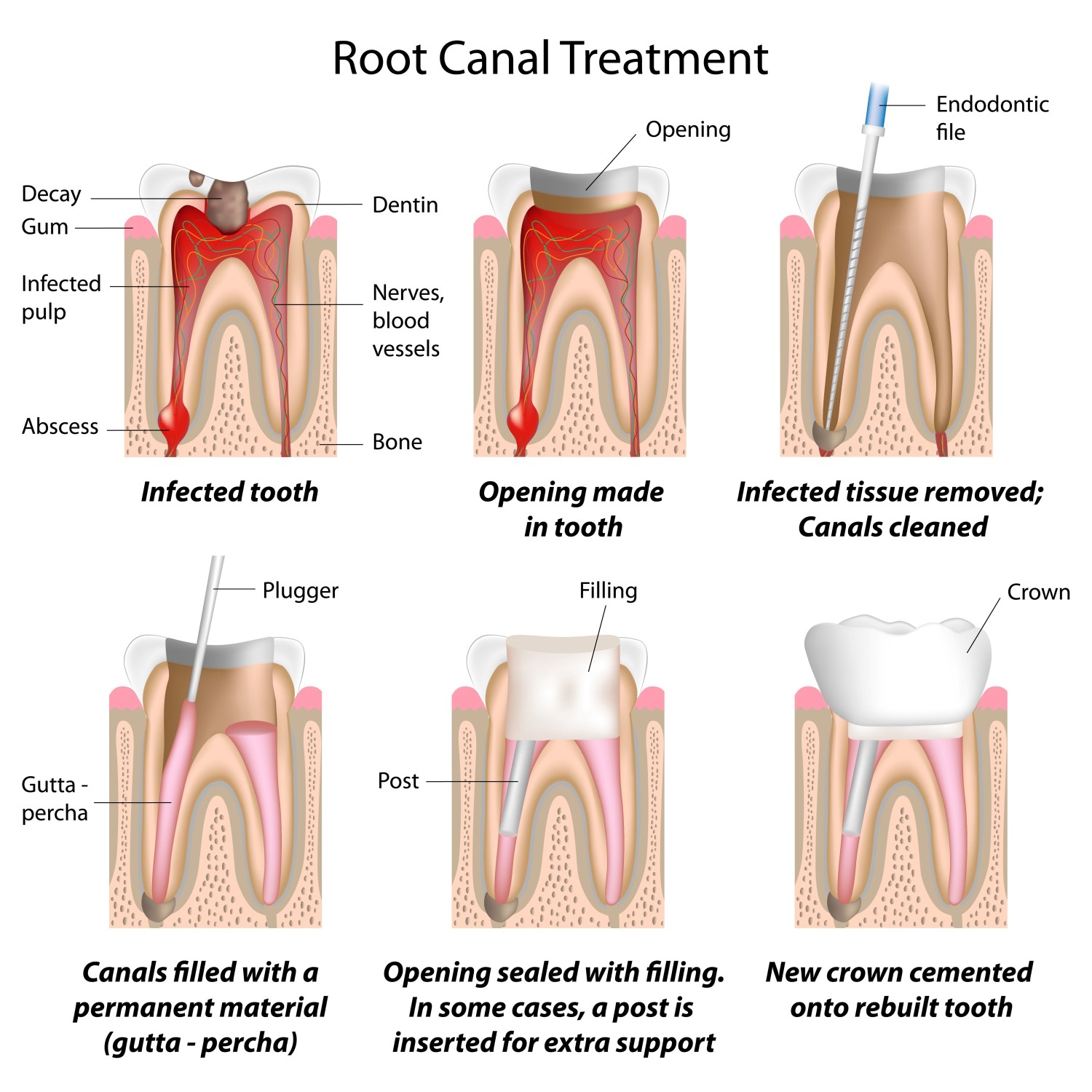Root canal therapy is a common dental procedure. When performed properly, it should be painless and should not interrupt your daily routine. A root canal becomes necessary when the tooth’s inner tissues, ‘the pulp,’ become infected or inflamed. This can happen because of deep decay, cracks in the tooth, or other damage. The purpose of root canal therapy is to save the tooth by treating these soft tissues.
What happens during root canal therapy is fairly simple. First, the infected or inflamed pulp is removed to prevent further discomfort or damage to the tooth. Then, the interior of the tooth is cleaned and disinfected and the tooth is filled with a rubber-like material called gutta-percha, which takes the place of the pulp. Finally, the tooth is restored using a crown or filling to keep it protected.
After treatment is complete, your tooth can continue to function normally. Patients find that these procedures are quick, comfortable, and pain free. Teeth treated with root canal therapy can last as long as your other teeth, if they are properly cared for.
Information courtesy of the American Association of Endodontists

